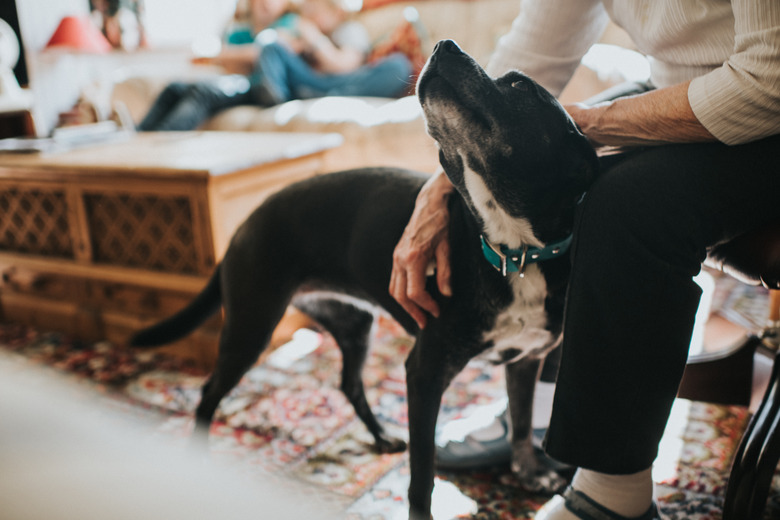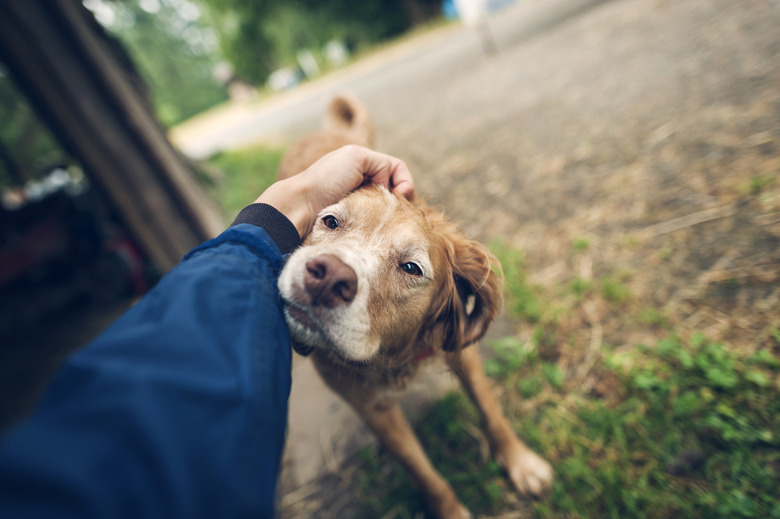How To Keep Your Dying Dog Comfortable
No one wants to think about the death of a pet, but it is an inevitable event that you need to be prepared to handle when the time comes. When deciding how to keep your dying dog comfortable during his last days, it's important that you keep him warm, give him a place to rest that's comfortable and safe, feed soft yummy food (if he's interested in eating), and make sure he has a convenient place to relieve himself. Always keep your veterinarian involved during your dog's final days.
Get a veterinary diagnosis
Get a veterinary diagnosis
It is absolutely essential for your veterinarian to be actively involved in your dog's health care up until the last day of his life. Your veterinarian needs to be aware of the exact health problems your dog is suffering from to prescribe the right medications to manage the pet's health problems. If your dog's health condition is terminal, your veterinarian should be able to give him medications, such as painkillers and appetite stimulants, that will minimize discomfort.
Know the signs of pain
Know the signs of pain
In order to make your dying dog comfortable, you will need to be able to recognize and address signs that he is distressed. Signs of pain and discomfort include changes in personality, lethargy, loss of appetite, changes in bathroom behavior, whimpering, whining, growling, and a lack of willingness to perform activities he previously enjoyed such as playing, jumping up, or climbing stairs. Once you have noticed signs of pain, try to figure out what is causing the discomfort and work to modify your dog's environment for his comfort.
How to comfort dying dog
How to comfort dying dog
When a dog is dying, try to make his life as easy and uncomplicated as possible. Put his food dishes, water dishes, bedding, favorite toys, and other supplies in one relatively small area so he does not have to travel across the house if he wants a drink or to lie down comfortably. If other pets or small children bother your dog, keep them away.
If your dog has difficulty climbing stairs, keep him in an area where he does not have to climb stairs, as long as you can be there with him. If he has difficulty going outside to use the bathroom, you may want to lay down puppy pads or newspapers so he does not have to try make his way outdoors. If he seems cold, give him additional blankets. Most importantly, spend lots of time with your dying dog. Give him favorite toys, treats, and lots of love.
Consider veterinary hospice care
Consider veterinary hospice care
Some veterinarians provide hospice care for terminally ill pets. These services help pet owners monitor the condition of dying pets and administer treatments to keep your pet as comfortable as possible until the animal passes. If you elect to provide hospice care for your pet, you will need to work with your hospice team to make end-of-life decisions for your dog. In the event that your dog cannot be kept comfortable, and is suffering, choosing to euthanize your dog rather than wait for him to die naturally may be best for him.
Use quality of life scale
Use quality of life scale
Many pet parents wonder how they will know when it's time to euthanize — if that is the option chosen — and most struggle with this sometimes unavoidable decision. A well-known veterinary oncologist, Dr. Alice Villalobos, came up with a quality of life scale to help pet owners figure out whether their dog or cat is still enjoying life. The scale, sometimes called the HHHHMM scale uses seven categories to "score" on a daily basis for the pet. The categories are: Hurt, Hunger, Hydration, Hygiene, Happiness, Mobility and More good days than bad. Each item is given a points scale that can be evaluated daily at home or in consultation with a veterinarian.


